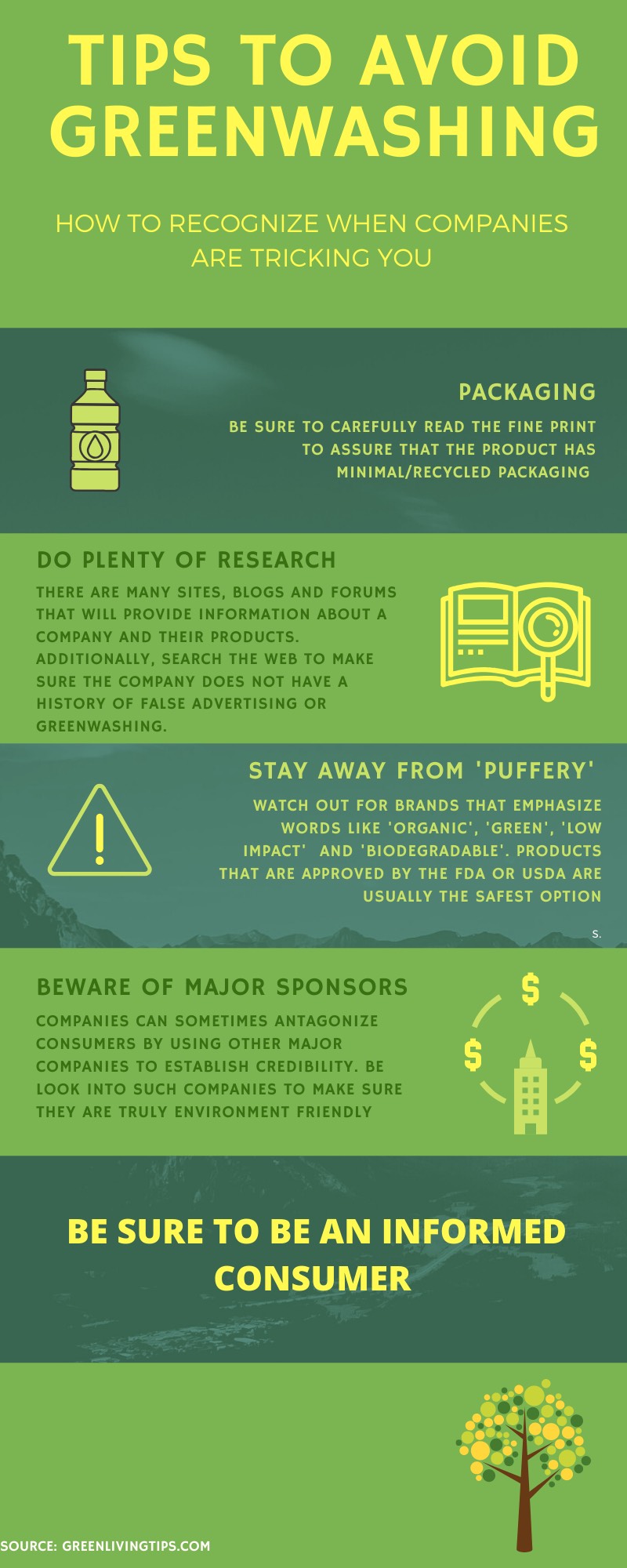Marketers’ main objective is to always appeal to the ever-changing landscape of what consumers seek out in products. When a consumer goes into an aisle of a store, their eyes are drawn to products that have attributes that they value. These days those attributes tend to be products that are sustainable and non-toxic.
“Sustainability used to be seen as a nice-to-have and a fringe trend, but now it’s a core differentiator and a way consumers are really deciding between brands,” said Lucie Greene, worldwide director of the Innovation Group and JWTIntelligence.com at Wunderman Thompson, to AdAge.com.
Though this trend might be a good thing if it meant the development of more sustainable products and practices, it has also introduced the issue of greenwashing into the equation.
Greenwashing is what happens when a company takes a product that has a lot of the same features as other products in their lines or available on shelves but uses packaging and keywords to make the products seem “greener” or more sustainable than others.
The term was first used by environmentalist Jay Westerveld in 1986 in an essay in which he criticized the irony of the “save the towel” campaign being pushed by hotels. Since the 80s, the way greenwashing is used by corporations has changed and the way we react to it has as well.
Accusations of greenwashing can now have a serious effect on a company’s value and reputation. In Feb. 2017, Walmart settled a $1 million lawsuit in California over misleading labeling on products. These products were plastics labeled with terms like “biodegradable” and “compostable” which California law determined to be too broad since they didn’t specify how long these products took to degrade.
The details around what can be considered greenwashing can vary between laws in each state, but ethically, brands should not be using greenwashing as a marketing tactic when their production practices do not line up.
As a consumer, it’s easy to fall into this trap of greenwashing. If a company chooses to promote themselves using misleading tactics when you’re in a store trying to make better choices, it’s hard to distinguish between what is a truthfully sustainable brand and which are trying to pull wool over our eyes.
A way to be careful when you’re shopping in stores is to watch out for some key signs that could mean the company is greenwashing. Vague language like “eco-friendly,” “green” and “good for the environment” are something to take a look at with a critical eye when shopping. These words and phrases are broad and without set definitions in most states. This means that companies can use these words without any kind of proof to back them up.
Watch out for imagery which may suggest that the company is trying to convey that their products are more sustainably sourced and produced than they really are. This could be using images of nature, like water bottles using images of mountains and clear springs while single-use plastic is one of the major pollutants we use on a daily basis. It could also mean using earth-toned hues in packaging; greens, browns and other warm tones make the viewer think the product is sustainable even without words.
While in a store you can also take a look at the packaging to see if the brand is owned by a larger conglomerate. New beauty and self-care brand Love Beauty and Planet promotes itself using many tactics that make the consumer think that the brand is sustainable. However, if you look at the labels on their products, you can find out that the brand is owned by Unilever, which in 2019 was named one of the top plastic polluters on the planet.
There are pros and cons to using products like those from Love Beauty and Planet. For example, if Unilever notices that a large number of people are being attracted to products that are advertised to use some recycled plastic, they could start to incorporate this into more products. However, it is always better to use your money to support companies that are entirely sustainable, or at least as sustainable as you can find available to you.
Finally, you should be doing research before buying products. We now have access to the internet which allows us to research more about companies beyond what they tell us through packaging and advertising.
There is no longer an excuse to not be an informed consumer. Look up the practices of brands that you use. Learn more about their line of production as well as their mission statement and business practices related to the environment and sustainability.
Don’t let businesses get away with greenwashing anymore. Don’t promote products that use these practices and do your best not to support these companies with your money.
Graphic: Shaniah Garrik/ The Johnsonian




